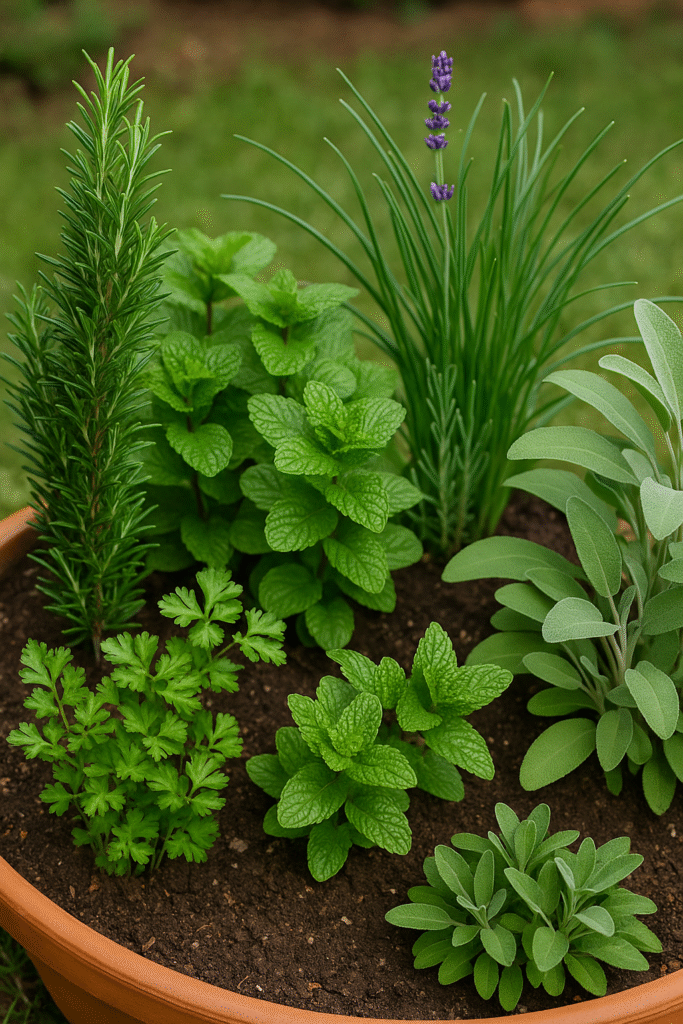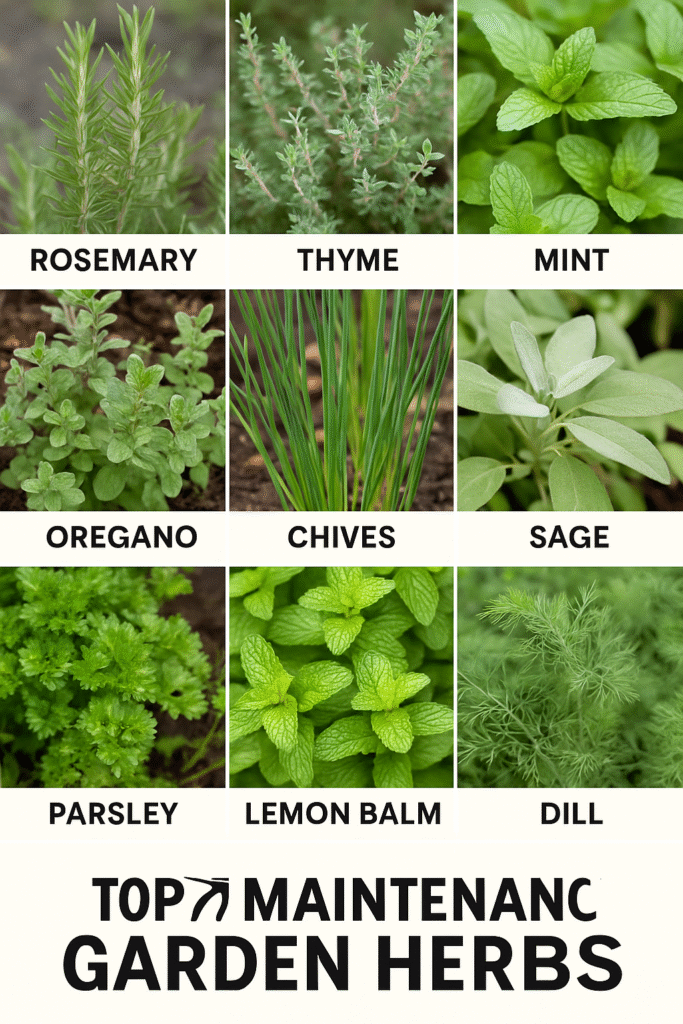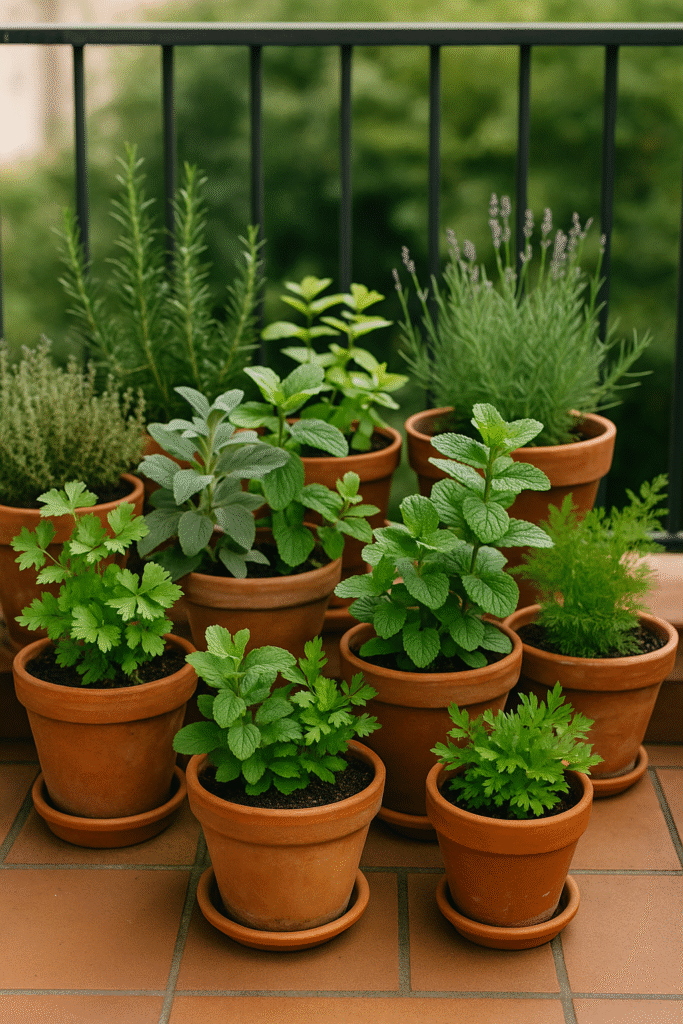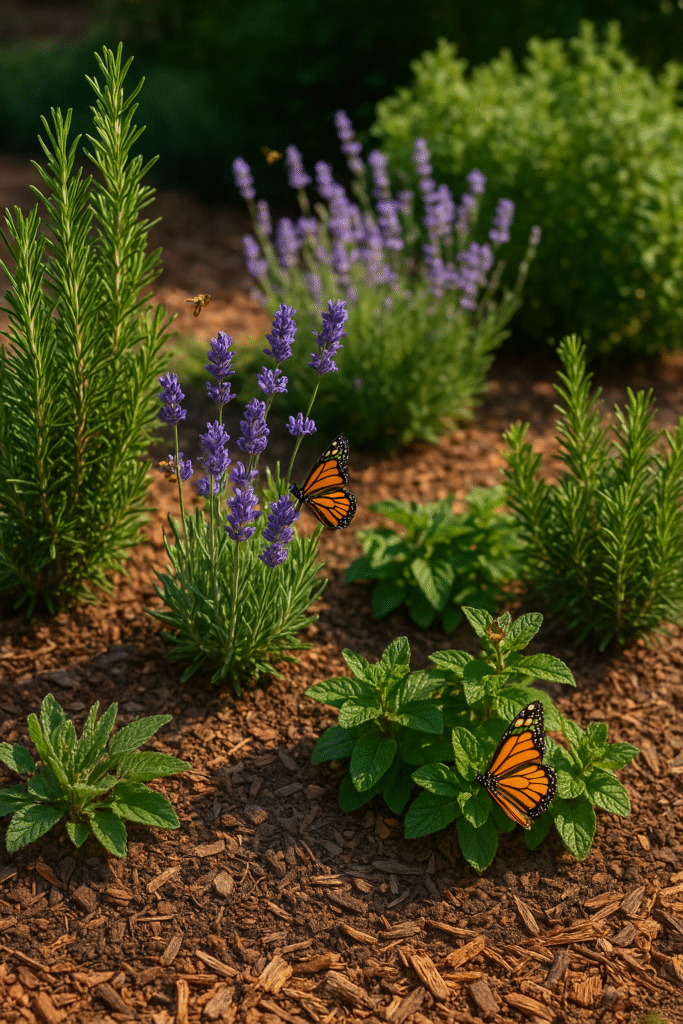Best Herbs for Beginner Gardeners: Low-Maintenance and High-Reward Picks

Fresh herbs add flavor to your meals, beauty to your garden, and even health benefits to your daily life. But here’s the best part: many herbs are surprisingly easy to grow—even for beginners or people with busy schedules.
In this guide, I’ll share the top low-maintenance garden herbs that thrive with minimal care. Whether you’re planting in pots on a balcony, creating a backyard herb garden, or just starting out with homegrown herbs, these picks will make gardening simple and rewarding.
Why Grow Low-Maintenance Herbs?
Herbs are some of the easiest plants to grow, and they come with plenty of perks:
- Fresh flavor at your fingertips
- Save money on store-bought herbs
- Use for cooking, teas, and home remedies
- Drought-tolerant and pest-resistant options are readily available
- Many herbs are perennials or self-seeding, so they grow back year after year
What Makes an Herb Low-Maintenance?
Not all herbs require constant watering or pruning. The best low-care herbs share these traits:
- Tolerant of different soil conditions
- Thrive with little water once established
- Naturally repel pests or resist disease
- Can be grown in containers, raised beds, or right in your garden soil
- Don’t need frequent pruning or attention
Top Low-Maintenance Garden Herbs

Here’s my list of easy-care herbs that are perfect for your garden or kitchen windowsill:
1. Rosemary
Why It’s Easy:
- Thrives in hot, dry conditions
- Resistant to most garden pests
Uses:
- Perfect for seasoning meats, bread, and roasted vegetables
- Great for herbal teas and aromatherapy
Care Tip:
- Plant in full sun with well-drained soil. Prune lightly to keep it bushy.
2. Thyme
Why It’s Easy:
- Low-growing, drought-tolerant, and needs almost no care
Uses:
- Works well in marinades, soups, and stews
- Great as a ground cover in garden borders
Care Tip:
- Trim back after flowering to prevent woody stems.
3. Mint
Why It’s Easy:
- Grows rapidly and tolerates neglect
- Almost impossible to kill
Uses:
- Great for teas, desserts, salads, and cocktails
Care Tip:
- Grow in containers to prevent it from taking over your garden.
4. Oregano
Why It’s Easy:
- Tough perennial that thrives in poor soil
- Handles drought like a champ
Uses:
- Staple in Italian, Greek, and Mediterranean dishes
Care Tip:
- Loves full sun and minimal watering.
5. Chives
Why It’s Easy:
- Grows back year after year
- Requires little water once established
Uses:
- Snip fresh for eggs, salads, and soups
Care Tip:
- Trim regularly to encourage new growth.
6. Sage
Why It’s Easy:
- Hardy and drought-tolerant once established
- Few pest problems
Uses:
- Ideal for stuffing, poultry dishes, and herbal teas
Care Tip:
- Prefers full sun and good air circulation.
7. Parsley
Why It’s Easy:
- Handles partial shade and cooler weather
- Minimal care needed beyond occasional watering
Uses:
- Garnish, salads, sauces, and smoothies
Care Tip:
- Harvest often to keep it producing.
8. Lemon Balm
Why It’s Easy:
- Hardy, spreads easily, and tolerates most conditions
Uses:
- Perfect for calming teas and natural remedies
- Adds lemony flavor to desserts
Care Tip:
- Cut back regularly to control its growth.
9. Lavender
Why It’s Easy:
- Technically an herb, known for both culinary and ornamental use
- Loves hot, dry weather
Uses:
- Baking, herbal teas, sachets, and aromatherapy
Care Tip:
- Needs full sun and well-drained soil.
10. Dill
Why It’s Easy:
- Self-seeds effortlessly
- Doesn’t need much attention once planted
Uses:
- Essential for pickling, seafood dishes, and sauces
Care Tip:
- Let some flowers go to seed for natural replanting.
Growing Herbs in Containers vs. Garden Beds

Both options work well, but here’s the breakdown:
Containers
- Control over soil and watering
- Easy to move for sunlight or weather
- Great for patios, balconies, and small spaces
Garden Beds
- Better for perennials and fast spreaders (with caution)
- Provides more space for larger herb patches
Bonus Tips for a Stress-Free Herb Garden

- Mulch around plants to reduce weeds and retain moisture
- Group herbs by sunlight and watering needs
- Let some herbs flower to attract pollinators like bees and butterflies
- Harvest regularly to keep plants healthy and producing
Common Mistakes to Avoid
Even low-maintenance herbs need basic care. Avoid these common pitfalls:
- Overwatering herbs that prefer dry soil (like rosemary and lavender)
- Planting invasive herbs like mint directly in the ground—use containers instead
- Neglecting to prune woody herbs (they’ll get leggy and less flavorful)
Final Thoughts: Your Easy-Care Herb Garden Awaits
Starting a low-maintenance herb garden is one of the easiest ways to enjoy fresh, homegrown flavor all year long. With herbs like rosemary, mint, thyme, and lavender, you’ll have a stress-free garden that’s both useful and beautiful.
So grab a few pots or find a sunny patch in your yard, plant these hardy herbs, and enjoy fresh harvests without the hassle!